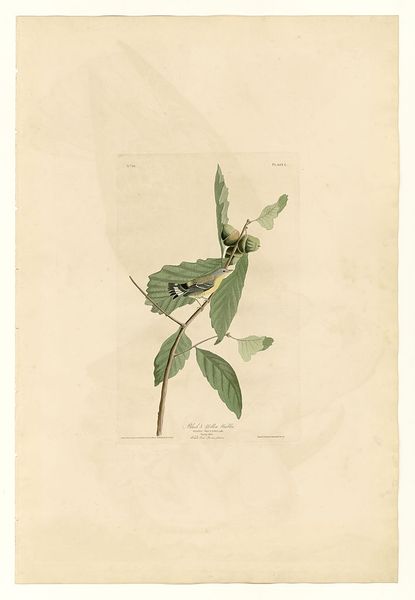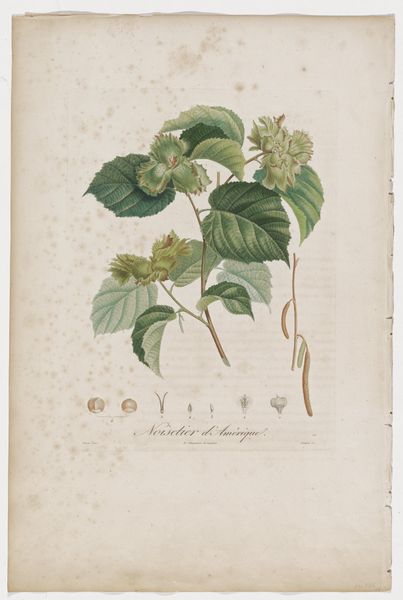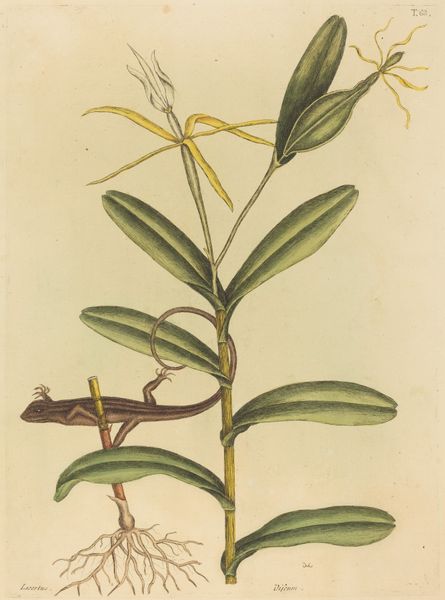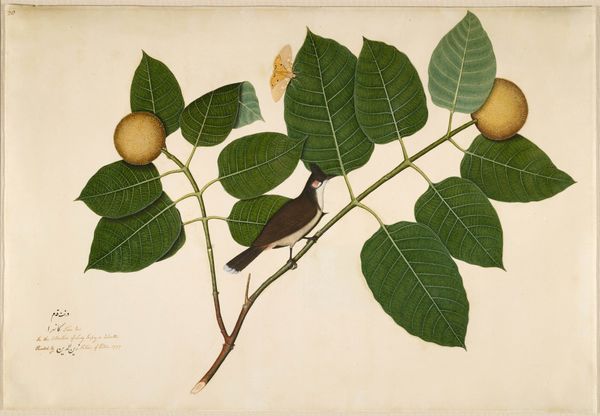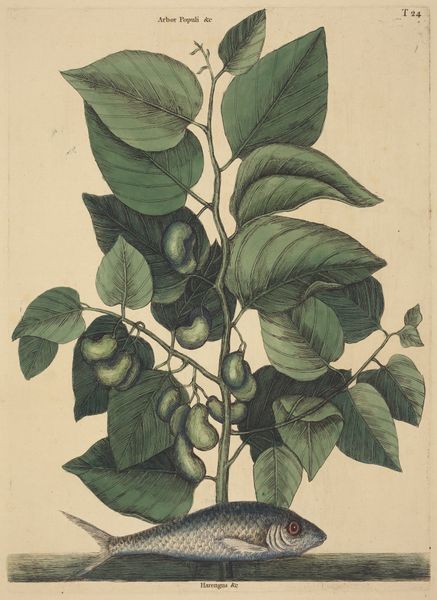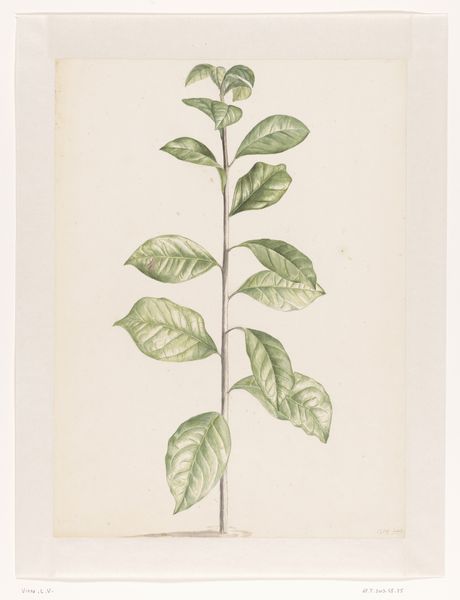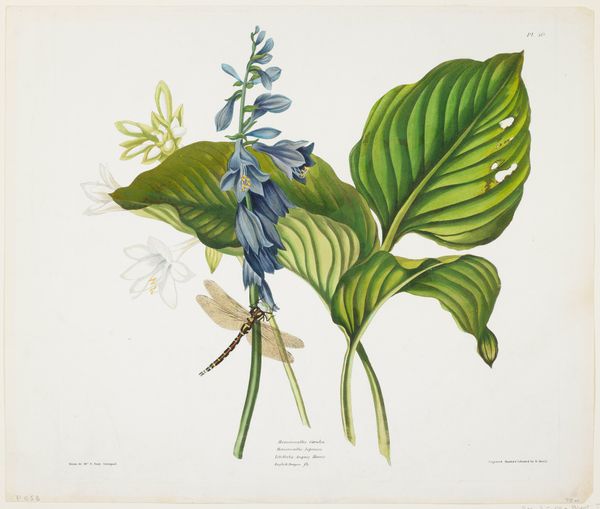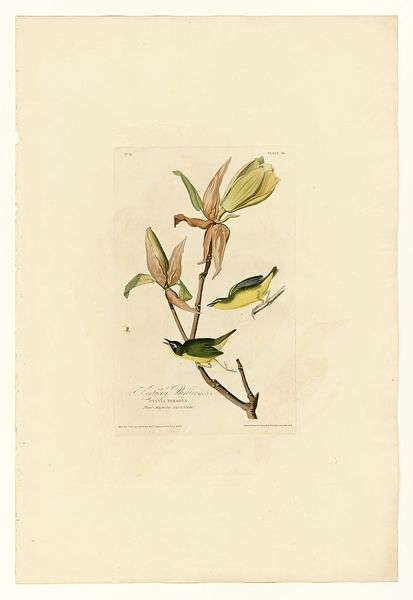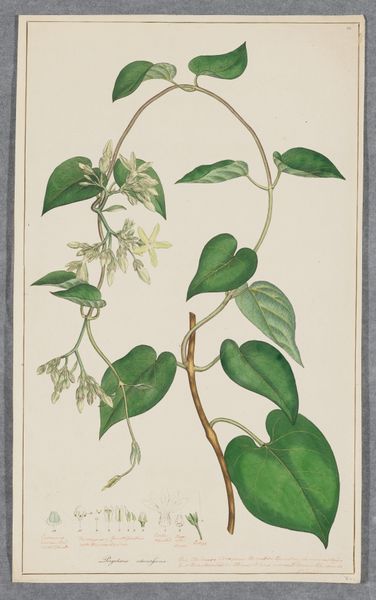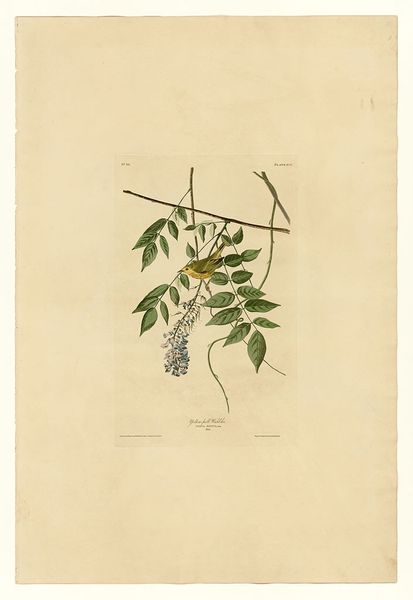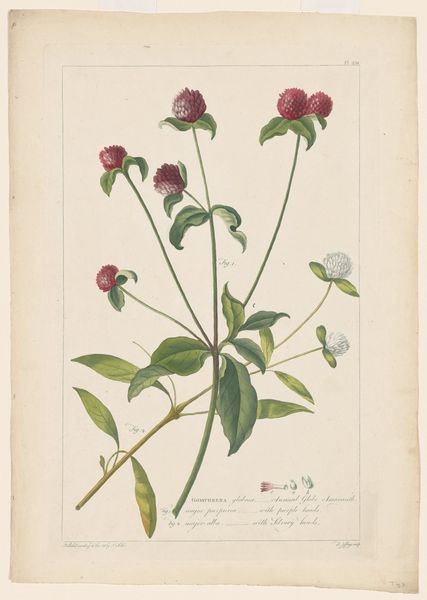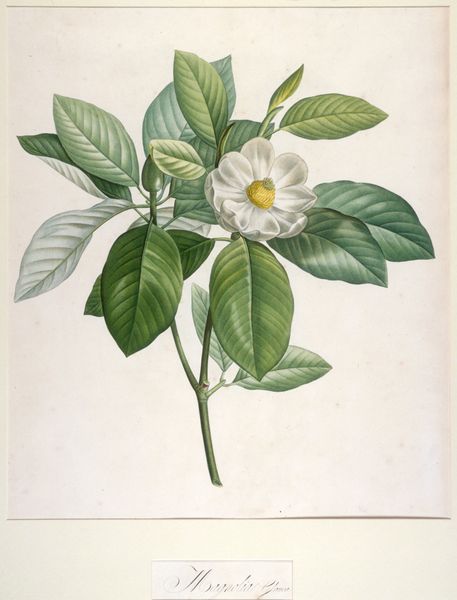
drawing, painting, watercolor
#
portrait
#
drawing
#
water colours
#
painting
#
asian-art
#
figuration
#
watercolor
#
islamic-art
#
watercolour illustration
#
miniature
#
watercolor
#
realism
Dimensions: 27 1/2 × 36 1/4 × 1 in. (69.85 × 92.08 × 2.54 cm) (outer frame)
Copyright: Public Domain
Editor: This is Sheikh Zain al-Din's "Crepe Ginger Plant," a watercolor painting from around 1780. It feels both scientific and decorative at the same time. What do you see in this piece? Curator: I see a collision of worlds. The meticulous botanical illustration speaks to a colonial desire to classify and control the natural world, mirroring the era’s imperial ambitions. This was also a period where Europeans in India were fascinated by Indian art, commissioning work. How do you think an artist like al-Din navigates that space? Editor: That’s interesting. So, it’s not just a simple rendering of a plant, but a reflection of power dynamics? Do you mean Zain al-Din's cultural identity becomes intertwined with the expectations of his patrons? Curator: Precisely! The "Crepe Ginger Plant" embodies the complex intersections of culture, science, and colonialism. While meticulously documenting flora for European patrons, artists subtly infused their work with their own cultural perspectives. Do you see how the plant is carefully isolated on the page? It's a scientific record but within a very stylized, artistic convention of Islamic art. Editor: I do now, and it makes me consider how his own identity might play out within his work. I see the plant isolated and the artistic intention being interwoven, now, and am also interested in that balance of scientific observation with artistic expression. Curator: The painting, then, exists in a liminal space, subtly challenging the singular narrative of colonial botanical studies. This becomes a silent yet powerful form of self-assertion, and challenges notions of who can speak, and how. What do you think about it, now? Editor: It makes you realize there's so much more to unpack than just what’s on the surface. The artist is speaking and challenging norms. It gives voice to art. Curator: Exactly, art like this asks us to question not just what we see, but the power structures that shaped its creation. It gives the "Crepe Ginger Plant" even greater context and helps understand the art.
Comments
minneapolisinstituteofart almost 2 years ago
⋮
The famed ‘Impey Album,’ to which these 11 natural history studies originally belonged, marks the beginning of a new school in the canon of Indian Painting: that is “Company Painting’’—so called after the British East India Company, which by 1757 had taken effective rule over the sub-continent—spanning from c. 1760-1880 and distinguished by native painters adapting to the needs of Colonial tastes. The result was an emergence of a distinctive Anglo-Indian aesthetic, which we see in the remarkable paintings here. Between 1777-1783, Lady Mary Impey, wife of the recently appointed Chief Justice of Bengal, Sir Elijah Impey, commissioned three artists: a Muslim, Shaik Zain ud-Din, and two Hindus, Bhawani Das and Ram Das (all of whom trained in a Provincial Mughal atelier in the neighboring city of Patna) to record the newfound wonders of her Calcutta aviary and menagerie.
Join the conversation
Join millions of artists and users on Artera today and experience the ultimate creative platform.
